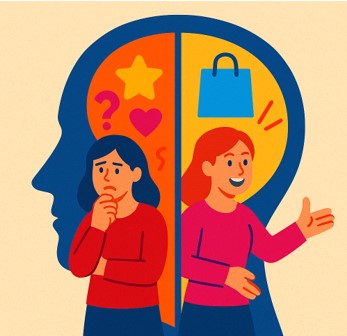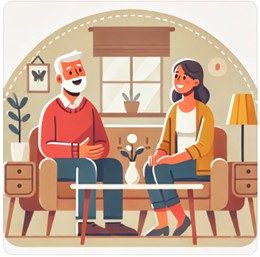In my last Research Tidbit, we discussed the importance of uncovering customers’ unconscious motivators and the use of techniques from NLP and hypnotherapy, such as guided visualization, to do so.
Another valuable technique for market researchers is the ego state approach, widely used in hypnotherapy. This model suggests that our personalities are made up of different “parts” or ego states, each of which comes to the forefront in different contexts.
For instance, an accountant might draw on a highly analytical part of herself when reviewing a spreadsheet, but access a more playful part while riding a rollercoaster with her kids. Most of the time, these parts work together smoothly – but not always. If you’ve ever thought, “A part of me wants to eat that donut, but another part knows I’ll regret it later,” you’ve experienced a moment when your internal parts were in conflict.
The ego state approach can be very helpful in understanding customer decision-making and how to appeal to all the parts involved in the decision. In research sessions, we can apply this approach by:
- Asking about the parts involved in the decision.
“Is there a part of you that really wants to make the purchase? A part that’s hesitant? Are there other parts that have concerns?”
- Exploring the motivations of each part.
“If the part of you that wants to go for it could speak, what would it say?”
- Discussing what would help align the parts.
“What would the resistant part need to feel more comfortable? What information or reassurance would help it get on board?”
This technique encourages participants to move beyond purely rational explanations and share emotional, intuitive, and even contradictory motivations – which are often more telling and actionable than logical responses alone.
For clients, the benefits go beyond deeper empathy. The ego state approach can help marketing teams:
• Create richer personas that reflect different internal drives and tensions.
• Identify internal conflicts that may be blocking conversions.
• Design messaging that speaks to multiple “parts” of the consumer—addressing doubts while inspiring desire.
By mapping out these inner dynamics, brands can craft communications that don’t just inform, but resonate – acknowledging and validating the complex inner worlds that shape real-world choices.
Let’s find ways to understand your customers more deeply. Email me at info at bureauwest.com.
Reference: “Ego State Therapy,” Gordon Emmerson, 2007



